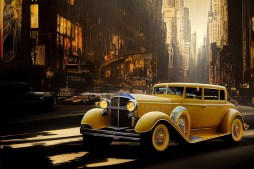Comic Book vs. Graphic Novel: Understanding the Key Differences
In the world of storytelling, comic books and graphic novels have captivated readers for decades. Both mediums offer visually stunning narratives that combine illustrations and text to create immersive experiences. However, there are distinct differences between comic books and graphic novels that go beyond their physical formats. In this guide, we will explore these differences to help you navigate the world of sequential art.
Format and Length
One of the primary distinctions between comic books and graphic novels lies in their format and length. Comic books are typically shorter in length, ranging from a few pages to around 30 pages per issue. These issues are usually published on a monthly basis as part of a larger series or storyline.

On the other hand, graphic novels are longer and more self-contained. They can range from 60 pages to several hundred pages in length, encompassing a complete story arc within a single volume. Graphic novels are often released as standalone works or as compilations of previously published comic book issues.
Storytelling Approach
Another key difference between comic books and graphic novels is their storytelling approach. Comic books tend to focus on episodic storytelling, where each issue contributes to an ongoing narrative or series. This format allows for ongoing character development, plot progression, and cliffhangers that keep readers eagerly anticipating the next installment.
In contrast, graphic novels offer a more cohesive storytelling experience with a clear beginning, middle, and end. They provide a self-contained narrative that can delve deeper into complex themes and allow for more nuanced character development. This format gives creators the opportunity to craft longer story arcs without any interruptions or limitations imposed by monthly publication schedules.
Artistic Style
Artistic style plays an essential role in both comic books and graphic novels but can differ significantly between the two mediums. Comic book art tends to be more dynamic with bold lines, vibrant colors, and exaggerated anatomy to convey action-packed scenes. This style is often influenced by the fast-paced nature of the medium and aims to capture readers’ attention with visually striking imagery.
In contrast, graphic novels often showcase a more diverse range of artistic styles. Since graphic novels have a longer page count, creators can experiment with different visual approaches to suit the tone and themes of their stories. Some graphic novels may feature highly detailed and realistic artwork, while others may opt for a more minimalist or abstract style. The artistic freedom afforded by the graphic novel format allows creators to push boundaries and explore new artistic territories.
Audience and Perception
Comic books have traditionally been associated with superhero stories and enjoyed by a dedicated fanbase of comic book enthusiasts. However, in recent years, the perception of comic books has shifted as they have gained mainstream recognition through successful film adaptations and increased diversity in storytelling genres. Comic books now cater to a broader audience that appreciates various genres such as fantasy, science fiction, crime, horror, and more.
Graphic novels, on the other hand, have been embraced by readers who appreciate longer-form storytelling and literary depth. They are often seen as more sophisticated works that explore complex themes and tackle social issues. Graphic novels have gained recognition as an art form in their own right, earning critical acclaim and attracting readers who may not typically be drawn to traditional comic book narratives.
In conclusion, while comic books and graphic novels share similarities in terms of their visual storytelling techniques, there are distinct differences that set them apart. Comic books offer shorter episodic stories with vibrant artwork targeted at a wide range of readership. In contrast, graphic novels provide longer narratives with diverse artistic styles that appeal to those seeking more immersive storytelling experiences. Understanding these differences will help you choose which medium best suits your preferences when exploring the world of sequential art.
This text was generated using a large language model, and select text has been reviewed and moderated for purposes such as readability.


